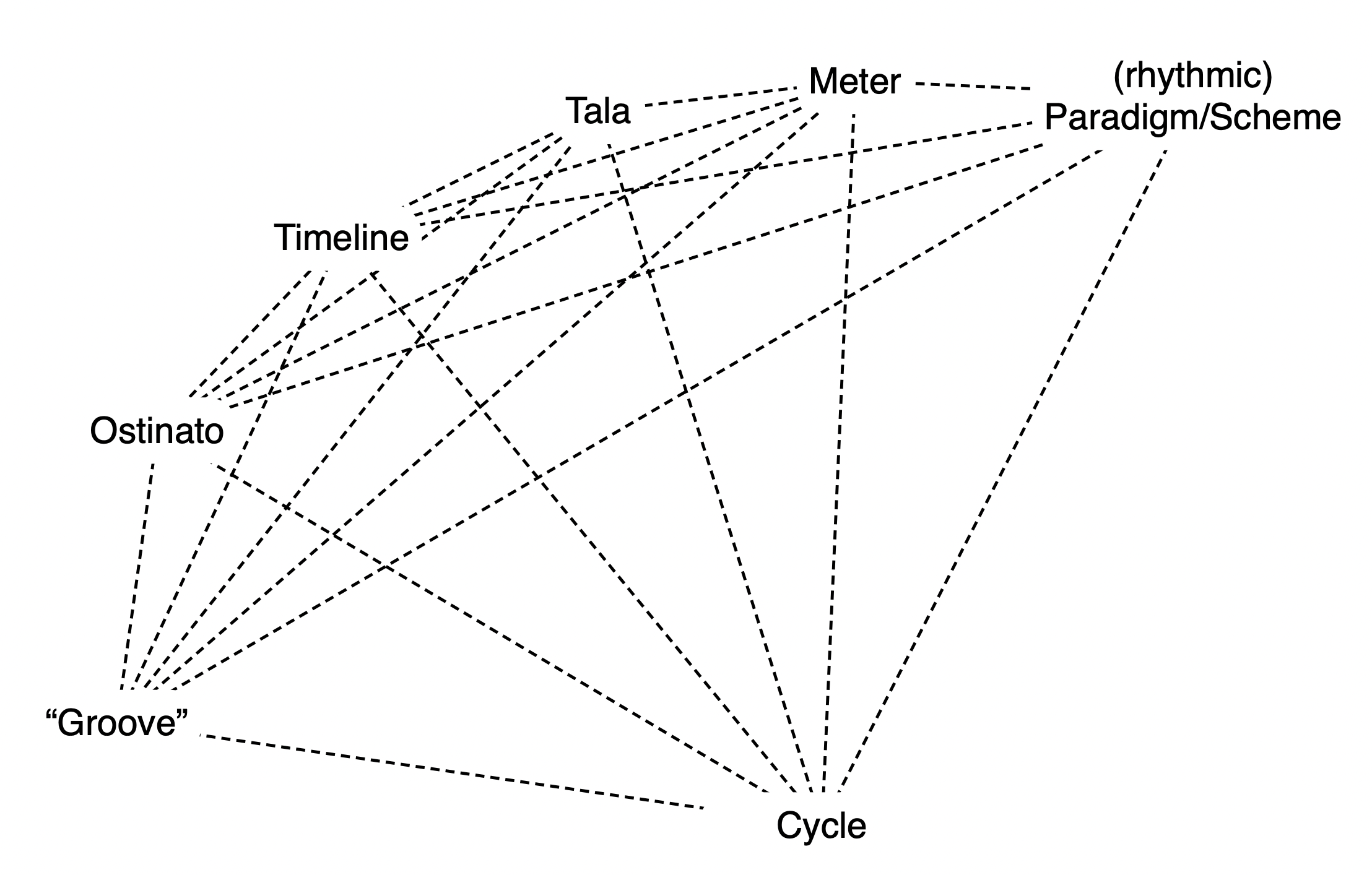What is a musical cycle?
A strict cycle is a series, associated with a succession of events, that is heard to be immediately and persistently repeated. It gives every event the purpose of completing the series and filling out its duration. The repetitions also associate events that appear in the same position in their respective cycles. So, during a cycle each event is charged both with strong expectations of what happens next and with an almost timeless association with remembered events.
Exact repetition can become monotonous, so strict cycles are often composed with internal irregularities of accent and phrasing that interact with the more regular periodicities they create. Moreover, in much cyclic music, the performers do not slavishly repeat events exactly, but vary them in ways that still preserve the basic identity of the cycle.
Indeed, inexact cycling affords a special kind of hearing: when different events occur at the corresponding moments of successive cycles, we may hear them to represent the same category of event. The cycle becomes a series of event categories, a template that offers various options on some beats or order positions. In some cyclical musics, differences between corresponding events are controlled to give a sense of directed change across repetitions.
Cycles differ considerably in texture, instrumentation, tempo, length, and the number of different events they have. Musical analysis (explore our approaches here) explains how these features, and the tension of regularity and irregularity, make each cycle distinctive. It also provides a way to compare and contrast cycles, and to recognize common compositional strategies in apparently different musics. [John Roeder]
“Cycle” is used in this research project as a term that coordinates what is meant by a host of more specialized terms that describe varieties of repetition and temporal organization in diverse musics. Meter ≠ Tala ≠ Rhythmic Schema ≠ Ostinato ≠ Timeline ≠ Groove (and so on); yet, all of these can be understood to belong to a family of concepts that draw on “cycle” as a fundamental organizing principle.

Cycle and a family of related terms for describing repetition
And yet, cycle here means something distinct from another broad term, “repetition,” in so far as it denotes a kind of repetition where different phases of one iteration of the cycle can be understood to be analogous or even equivalent to the parallel phases of other iterations even when overt repetition is avoided. One of the aims of this project is to survey the great variety of ways that different musics establish cyclicity. For example, some cycles use fixed cycle lengths and uniform subdivisions to establish the cyclicity. Such varieties could be described with “meter” in its conventional definition (a hierarchy of near-isochronous nested pulse streams, which are “entrainable”).
But this project, by instead using “cycle” to describe these situations, remains agnostic as to the question of whether near-isochrony, entrainability, and beat hierarchy are necessarily the most relevant information for understanding emergent temporal organization schemas in such music. This posture is adopted because there exists much music where cycle-lengths are flexible, and where “place” in the cycle is established by information other than durational values, e.g. pitch-contour, relative durations, stress/timbral patterns etc. One outcome of this project is to establish and draw together a critical music-theory literature where cycles of these kinds can be described in terms of commonalities in cycle-creation strategies in music where cyclicity appears to be an important organizing principle and an aestheticized aspect of musical experience without unnecessary emphasis on the divergence of this or that cycle from more specific kinds of time-organization such as “meter.” [Grant Sawatzky]
